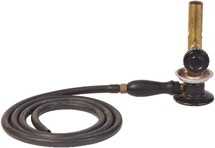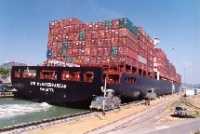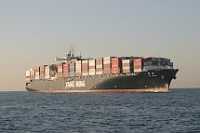EAPC is the first commercial company to adopt BioPetroClean’s Bioremediation technology
BioPetroClean, a global provider of commercial grade bioremediation systems for oil contaminants, announced that the company had closed on $3 million in Series A funding led by its sole institutional investor New York-based 21Ventures LLC.
The company also announced the successful installation of its bioremediation technology for Eilat Ashkelon Pipeline Co. Ltd. (EAPC), Israel’s land bridge for transporting crude oil from the Red Sea to the Mediterranean. EAPC is the first commercial company to adopt BioPetroClean’s Bioremediation technology developed by Professor Eugene Rosenberg, PhD, a world-renowned authority in the biological treatment of oil pollution, Professor of Microbiology at Tel Aviv University and Co-Founder and Chief Scientist at BPC.
Rosenberg, together with Professor Eliora Ron, pioneered the use of naturally occurring bacteria to clean up oil pollution in oil tankers, pipelines and on beaches in the 1970s, including the infamous Exxon Valdez oil spill off the Alaskan coast.
“Our company was extremely careful in evaluating all possible solutions for separating oil from water, including mechanical (separators) and other biological solutions,” said Izik Levi, Port Manager & Head of Operation for Eilat Ashkelon Pipeline Co.
“EAPC selected BPC after several months of successfully testing their bioremediation solution to clean oil contaminations from drainage water at one of our oil storage farms and receiving EPA approval to discharge the water back to nature. We were relieved to find a company (BPC) that provides a bio-digestable, environmentally friendly treatment for oil contamination that both meets EPA requirements and is cost and time effective.”
BioPetroClean: First Commercial Installation For Israeli Pipeline Company
EAPC is the first commercial company to adopt BioPetroClean’s Bioremediation technology
11.12.06 / 00:00
•
More articles that may interest you
More news from Industry & Trade Section
>Pharmaceuticals exports: 5.1% of Israel's Total Exports/04.12.06
>Export growth slowed down considerably in Aug-Oct 2006/27.11.06
>Tax Commissioner: 2006 will be a record year for state revenue/27.11.06
>Olmert: "For the first time - Israeli exports will be greater than Israeli imports"/27.11.06
>Customs seized 130 louis Vuitton Counterfeited items/27.11.06
>CBS: Economy shrank by 1.4% in Q3/20.11.06
>CBS: Israel’s trade deficit stable at $6.66 billion/20.11.06
>CBS: Exports of goods in October total USD 3.3 billion/20.11.06
>Top Chinese businessmen to visit Israel this week/20.11.06
>CIA: Since 2003 Israel’s GDP per capita grew by $5,000/20.11.06






